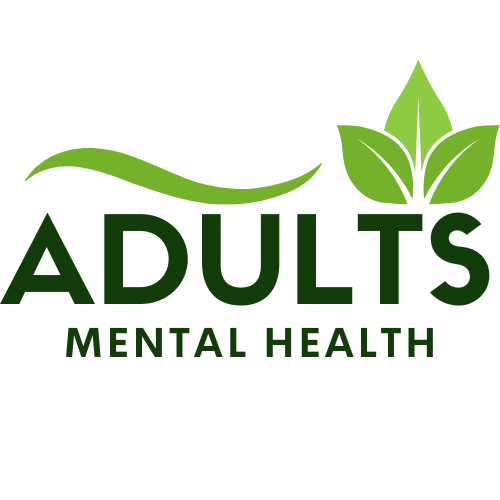Relationship between physical activity and mental health
Published on July 18, 2025 by Your Name
Introduction
Have you ever had a workout that made you feel not only stronger but happier? You’re not imagining it. The association between physical activity and mental health is supported by science and experienced by millions. We all know the benefits of exercise on our bodies (it reduces stress, increases self-esteem and makes us fitter, to name a few) and that is not all – exercise is good for our minds too! In this article, we’ll explore the ways in which moving your body can lift your spirits, sharpen your focus and help you manage mental health challenges like anxiety and depression. This week, let’s take a deep dive into why physical activity is your brain’s best friend.
Why Exercise Is Good for Your Body and Mind
The Relationship Between Exercise and Mood
Exercise has the added bonus of not just burning calories, it’s also a natural mood enhancer. When you exercise, your brain produces endorphins — those mood-lifting chemicals that induce a sense of euphoria commonly referred to as the “runner’s high.” Even moderate physical activity, like a 30-minute walk, can increase levels of neurotransmitters that regulate mood and motivation, including serotonin and dopamine among others, studies show.
- Endorphins: Are natural painkillers and mood lifters.
- Serotonin: Keeps emotions in check and creates calm.
- Dopamine: Boosts motivation and pleasure.
One 2019 study in The Lancet Psychiatry found that people who engaged in regular physical activity had 43 percent fewer days of poor mental health than those who were sedentary. The science is definitive: When you move your body you rewire your brain for positivity.
Stress Reduction Through Movement
Feeling overwhelmed? Lace up your sneakers. Exercise lowers cortisol, the stress hormone, and boosts the production of calming neurotransmitters like GABA. It does not matter if it is yoga, running or dancing — exercise can help your body manage stress better.
For example, 34-year-old teacher Sarah began doing yoga three times a week to help manage stress associated with work. Within a month, she was sleeping better, experiencing fewer anxious thoughts and taking a much calmer view of things. And some activities like yoga or tai chi meld movement with mindfulness, multiplying the stress-busting effect.
2Physical Activity and Mental Health are you in?
Aerobic Exercise: A Mood-Lifting Powerhouse
Aerobic exercises such as running, cycling and even swimming are particularly good for mental health. Those activities are known to raise heart rate, increase oxygen flow to the brain and boost neuroplasticity — the brain’s tendency to form new connections. In 2020, a meta-analysis reported that physical exercise, specifically aerobic exercise, can potentially cut symptoms of depression in half for some people.
Try these aerobic activities:
- Walking at a brisk pace: This is something that everyone could do and is very effective.
- Locked mode will be great for outdoor enthusiasts, or those hitting the gym.
- Dance workouts: For some fun and encouraging mood lifts.
Strength Training for Confidence and Band-Aidrend
Pumping iron or undertaking bodyweight exercises aren’t just great for building muscle — they’re great for building mental toughness. Even weight training has been proven to boost one’s self-esteem and decrease symptoms of anxiety. A 2021 study in Frontiers in Psychology found that people who engaged in resistance training experienced significant gains in mood and cognitive function.
Incorporate these into your routine:
- Squats or lunges: Recruit multiple muscle groups.
- Push-ups: To develop strength in your upper body and confidence.
- Plank variations: Boost your core stability and mental strength.
Mind-Body Exercises for Emotional Balance
Practices such as yoga, Pilates or qigong integrate physical movement and mindfulness, and they are perfect for emotional health. These practices help to concentrate mind, induce concentration reducing anxiety and relaxing the body. For example, one 2018 study found that people who did yoga for eight weeks reported a 20% decrease in anxiety symptoms.
How Much You Exercise Matters
You don’t have to be a marathon runner to benefit mentally from exercise. The World Health Organization suggests getting at least 150 minutes of moderate intensity physical activity a week. That’s 20–30 minutes a day, five days a week. Even brief activities, such as walking for 10 minutes, can help. Here’s a sample weekly plan:
- Monday: 30-minute brisk walk.
- Wednesday: 20-minute strength training session.
- Friday: 45-minute yoga class.
- Sunday: 30-minute dance workout.
Consistency matters more than intensity. “Find things that are fun for you so that you make movement a habit.
Overcoming Barriers to Exercise
Time Constraints
Busy schedule? You’re not alone. Try in little bits.Parts add up: Three 10-minute sessions can be as good as one 30-minute session. Squeeze in a short HIIT sesh during your lunch hour or a post-dinner walk.
Lack of Motivation
Feeling unmotivated? Start small. Devote five minutes to movement, whether stretching or doing jumping jacks. Do some exercise paired with something pleasurable, like listening to a podcast or music at the same time. Taking a group class or working out with a friend can also increase accountability.
Physical Limitations
If mobility or chronic conditions make exercise difficult, see a healthcare provider to discuss your options. Even lower-impact exercises, like swimming or chair yoga, may be incredibly helpful to your body if you’re not overdoing it.
Real-World Impact: A Case Study
Meet John, a 42-year-old accountant who used to have mild depression. When he began jogging three times a week and doing mindfulness meditation, he found that his mood had vastly improved within six weeks. His quality of sleep became better, and he felt more productive at work. John’s journey shows how physical exercise alongside mental health tools can create tangible change.
Tips to Get Started
- Be Realistic: Begin with at least 10–15 minutes of activity each day.
- Choose Enjoyable Activities: Love dancing? Try Zumba. Prefer nature? Go hiking.
- Monitor Progress: Devote to a fitness app or journal to track your progress and stay motivated.
- Get Help: Go to a health club, hire a trainer or get a workout partner.
- Practice Patience: The benefits of mental health will unfold over time with routine.
Conclusion
We know that there is a relationship between mental health and exercise. From increasing endorphins to decreasing stress, exercise can be a great weapon in the fight to make yourself feel better. But whether you’re into a pulsating run or a quiets- the-mind yoga class, moving your body can shift your brain. Begin with bite-size bursts of exercise; maintain the exercise, and these exercising will unlock a brighter, happier you.
Action Call: What are some of your favorite ways to get busy? Tell us your tips in the comments, and please sign up for our Well newsletter for more wellness coverage!
FAQs
How it works Physical exercise strengthens mental health in several ways.
Exercise stimulates the release of endorphins, serotonin and dopamine, thereby improving mood, relieving stress and enhancing emotional health.
What are the best exercises for mental health?
Jogging and cycling, weight training and mind-body exercises (like yoga and Pilates) all support mental health.
How much exercise is necessary to mental health benefits?
Shoot for 150 minutes every week, or roughly 20–30 minutes each day, to get the most benefits.
Does exercise help anxiety and depression?
Yes, research finds that regular physical activity can reduce symptoms of anxiety and depression by as much as 50 percent in some cases.

